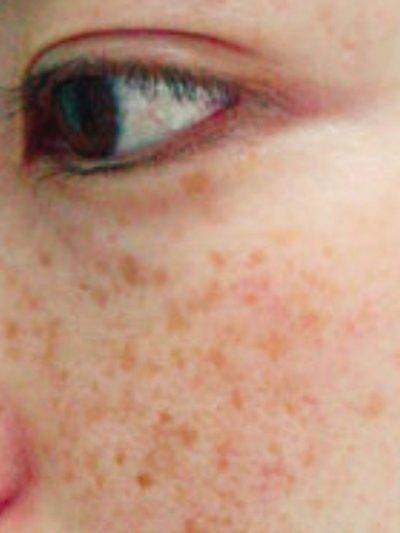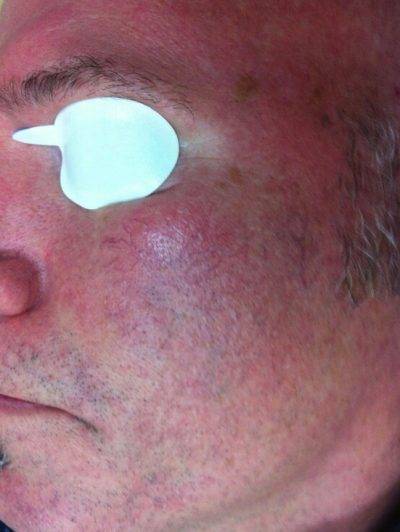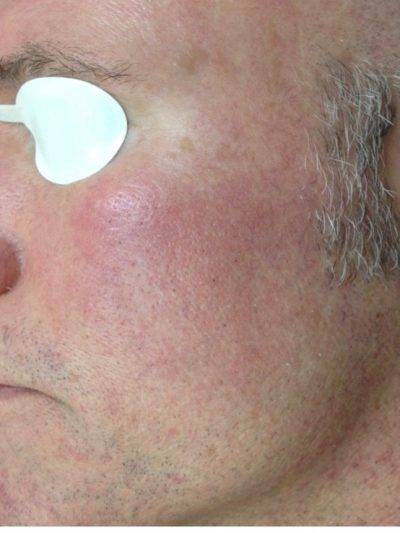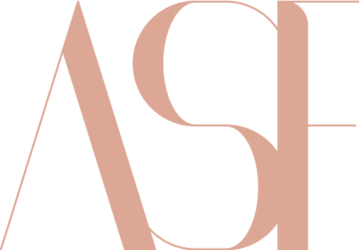Menu
ABOUT PHOTOFACIAL TREATMENTS
Photofacial, also referred to as photorejuvenation or IPL (intense pulsed light), is a non-invasive skin resurfacing treatment that uses laser light to target and correct skin damage. The procedure involves a non-abrasive process that deeply permeates the surface of the skin with a broad scope of light. The result is new collagen production, improved texture and better color. Photofacial treats an array of skin conditions like aging, sun exposure, wrinkles, freckles, flushing, dark spots, redness and other skin related issues.
PHOTOFACIALS ADDRESS CONDITIONS SUCH AS
- Anti-Aging
Aging skin is normally characterized by the appearance of wrinkles, fine lines, sagging skin, crows feet around the eyes and the loss of elasticity. Because the skin is aging and has had more exposure to the sun, it will begin to lose volume, become dry and develop brown spots.
- Broken Capillaries
Tiny blood vessels become more noticeable at the skin’s surface in the form of a spider web or tree branch shape. The broken capillaries or spider veins often appear as red or blue in color.
- Facial Flushing
The face develops redness from hundreds of small dilated blood vessels near the skin’s facial surface. Facial flushing can result in itchy inflamed skin that may sweat and blister from the condition.
- Sun Damage
When the skin has too much exposure to the sun, it can develop fine lines, become dry, wrinkle and lose elasticity. The UV light causes collagen loss, so the skin won’t spring back, resulting in sagging and an uneven skin tone.
- Brown Spots
Brown spots are often referred to as age spots. They’re flat and usually occur on sun-exposed areas.
- Rosacea
Rosacea is a skin condition that usually results in redness on the face. Symptoms are typically pimples, dilated blood vessels, pus-filled bumps and are often located on the forehead, nose chin and cheeks.
- Blotchy Skin
Blotchy skin is a reference to a skin discoloration that is characterized by irregular patches on the skin. The patchy skin may appear in a red, brown or gray color on the face, arms, chest and legs, accompanied by itching.
- Redness
Skin redness, also referred to as erythema, is an irregular condition that occurs with flushing of the skin. This abnormality is often accompanied with itching and swelling.
- Facial Veins
Varicose veins or spider veins that are visible on the face are also called facial veins. The blood vessels become dilated and are usually noticeable on the forehead, cheeks, nose and eyelids.
- Melasma
A skin condition that causes tan or dark patchy discolorations on the skin. It often occurs in pregnant woman, but can also be triggered by sun exposure and birth control pills.
- Facial Color / Facial Pigmentation
Facial pigmentation occurs when the skin on the face produces too much melanin, resulting in darker skin. Sun exposure and pregnancy can result in facial pigmentation.
- Age spots
Age spots are brown spots that develop from the over production of melanin. They gradually happen as people age or from UV rays and tanning beds.
- Liver Spots
Older skin can become discolored with the appearance of brown spots, which are also identified as age spots. Over exposure to the sun’s UV rays is also a cause of liver spots.
- Unwanted Freckles
Freckles are the small brown spots on the skin that appear on the face and arms. When melanin in the skin reacts to sunlight, freckles may multiply and dominate a whole area of skin, which is usually the face.
how PhotoFacial works and what it's for
Skin damage has a litany of causes. Unfortunately, over the counter treatments are often minimally effective and temporary. At Advanced Skin Fitness we recommend PhotoFacial treatment, also known as Photo Rejuvenation, FotoFacial, or IPL (intense pulsed light) to rectify the aesthetic damage caused by aging and sun exposure, which are two major culprits for creases and discolorations in the skin. It’s also ideal for Rosacea and vascular redness to help reduce sun damage and brown spots.
Some of the inevitable byproducts of aging and sun exposure are wrinkles, freckles, dark spots, redness and other related skin issues. PhotoFacial can dramatically reduce these effects by improving red and brown discoloration all at once. We use the FDA approved Alma Harmony AFT Intense Pulsed Light technology to alleviate the damage caused by age progression and sun exposure with a minimum level of discomfort. The procedure is non-invasive and is a preferred treatment for patients who want a quick, painless, effective solution for their damaged skin.
At Advanced Skin Fitness our licensed technicians will work with you to customize a treatment package that is best suited for your skin type, condition and needs. For enhanced results we sometimes combine the Photo Facial procedure with other leading technology, like Micro Needling, HydraFacial, Pixel Laser Resurfacing, and vShape Skin Tightening. This combination can produce some amazing outcomes.
There are numerous questions that patients may have before receiving PhotoFacial treatment for skin damage. These are some common ones.
Call us to talk about PhotoFacial and our other treatments to see how we can tailor a solution for your unique condition.
What is PhotoFacial and how does it work?
PhotoFacial is a non-invasive treatment that uses intense pulsed light to target red and brown pigmented lesions in the skin, often caused by aging and sun exposure.
PhotoFacial, also referred to as Photo Rejuvenation or IPL (intense pulsed light), is a skin resurfacing treatment that uses a colored light to target and minimize skin conditions redness, discoloration and hyperpigmentation, to name a few. It’s a non-abrasive procedure that deeply permeates the surface of the skin with a wide scope of light to alleviate pigmentation issues from years of sun exposure.
PhotoFacial is especially effective at treating dark spots, rosacea, vascular redness, and patched discoloration on the face and other parts of the body. It’s a safe, quick process that dramatically improves the complexion of the skin.
How can PhotoFacial treat rosacea and broken capillaries?
PhotoFacial is highly effective at dramatically reducing the redness and scars associated with Rosacea and broken capillaries.
Patients who are afflicted with Rosacea will often appear red-faced because the blood vessels are dilated and the skin is consistently flushed. The nose and cheeks can become blemished with pimples and blisters because of this skin condition. PhotoFacial can effectively treat the blood vessels and redness without disturbing the healthy tissue surrounding the damaged area. Patients should notice an exceptional reduction in flushing with prolonged effectiveness.
There are a number of causes of broken capillaries like sun exposure, aging and trauma. PhotoFacial can remove the blotches and streaks caused by these broken capillaries, by eliminating the damaged vessels.
Are PhotoFacial treatments painful and how long is the procedure?
PhotoFacial treatments take about 30 minutes to perform and are not typically painful, but some patients may have some slight discomfort.
The procedure is non-surgical and non-ablative, so the risk of pain during the procedure is dramatically reduced. Some patients may experience a slight discomfort, so cold air is used to desensitize the area as well as offering additional protection from injury. Generally, the process of light energy delivery has been described as feeling like a rubber band snapping against the skin.
Do PhotoFacial treatments have side effects and is there downtime?
PhotoFacial treatments may result in some mild discomfort post procedure, but patients can return to their normal activities immediately without requiring recuperation or downtime.
It’s not uncommon for patients to feel a slight warmth after the treatment. The skin may even become remotely pink, but barely noticeable, so it’s easy to conceal until it clears up. Although infrequent, a moderate amount of swelling or bruising may happen. This is temporary and should dispel soon within a few days. To avoid any additional discomfort and achieve maximum results avoid the sun at least 6 weeks before having the procedure.
How many PhotoFacial treatments are required to see results?
To see noticeable results, a course of 5 to 8 treatments are recommended.
After each treatment has been performed, you will see progressive improvement. The treatments should be performed around 3 weeks apart. Initially the skin will have a smoother texture and even tone. Gradually brown spots will lighten and redness and flushing will fade. To maintain the effects after a series of treatments, it’s best to have follow up treatments every six months. This should increase longevity of the effects.
Does PhotoFacial work on all skin types?
Patients with dark or tanned skin are not candidates for the treatment.
Unfortunately, PhotoFacial does not work with dark or tanned skin, because of the elevated levels of melanin in the skin.
Read more
BEFORE & AFTER





